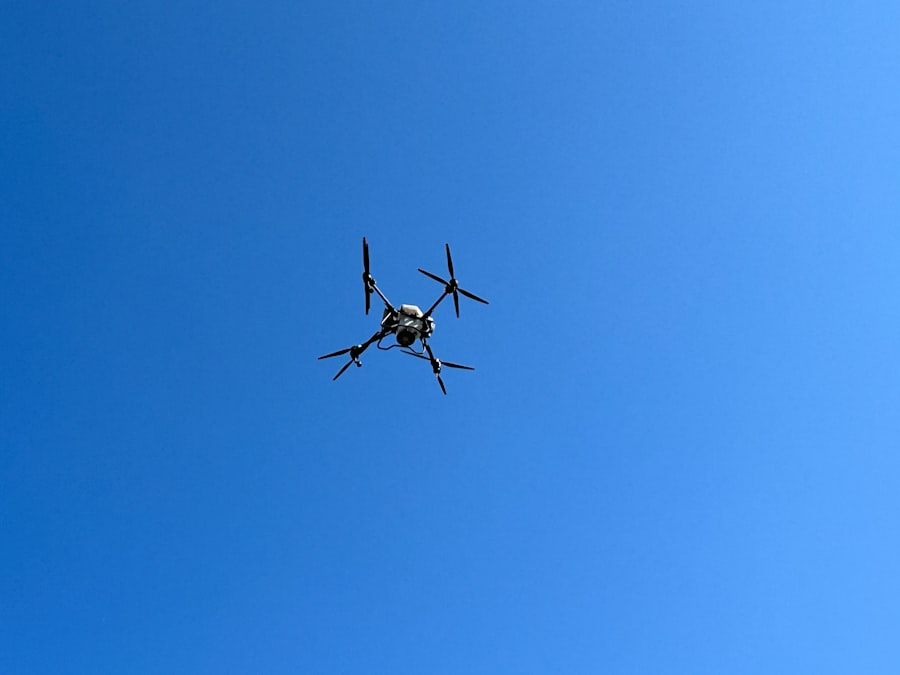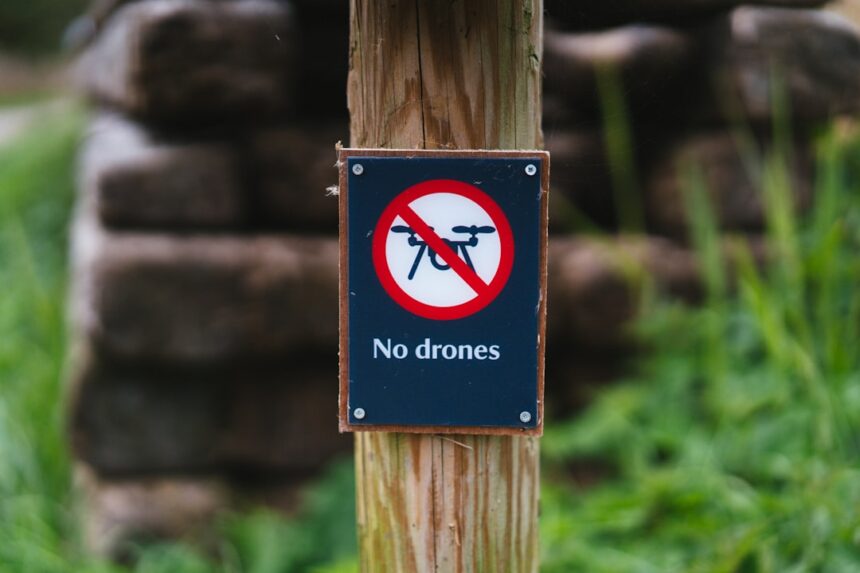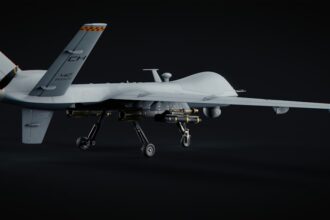First-person view (FPV) drone strikes have emerged as a significant aspect of modern aerial operations, particularly in military and tactical contexts. These drones, equipped with cameras that provide real-time video feeds to operators, allow for precise targeting and enhanced situational awareness. The evolution of drone technology has transformed the landscape of aerial surveillance and combat, enabling operators to engage targets with unprecedented accuracy.
As the use of FPV drones becomes more prevalent, understanding the dynamics of their deployment and effectiveness is crucial for both military strategists and civilian operators. The rise of FPV drone strikes has sparked interest not only in their operational capabilities but also in the factors that influence their success rates. With advancements in technology, these drones have become more accessible, leading to a proliferation of their use in various fields, including agriculture, search and rescue, and even recreational activities.
However, the implications of their use in conflict zones raise important questions about ethics, legality, and the potential for misuse. As such, a comprehensive examination of FPV drone strikes is essential to grasp their impact on contemporary warfare and security operations.
Key Takeaways
- FPV drone strikes involve using first-person view (FPV) technology to remotely pilot drones for targeted strikes.
- Factors affecting FPV drone strike success rate include weather conditions, target visibility, and operator skill.
- Data collection and analysis methods for FPV drone strikes may include video footage analysis and flight data recording.
- Case studies of successful FPV drone strikes highlight the effectiveness of precise targeting and operator expertise.
- Case studies of unsuccessful FPV drone strikes demonstrate the impact of environmental factors and technical limitations on strike success.
Factors Affecting FPV Drone Strike Success Rate
Several factors contribute to the success rate of FPV drone strikes, each playing a pivotal role in determining the outcome of an operation. One of the most critical elements is the skill and experience of the operator. Proficient pilots who are well-versed in the intricacies of drone maneuverability and control can significantly enhance the effectiveness of a strike.
Their ability to navigate challenging environments, avoid obstacles, and maintain a steady focus on the target can make the difference between a successful engagement and a missed opportunity. Environmental conditions also play a significant role in the success of FPV drone strikes. Factors such as weather, visibility, and terrain can greatly influence operational effectiveness.
For instance, adverse weather conditions like heavy rain or strong winds can hinder a drone’s performance, making it difficult for operators to maintain control or achieve accurate targeting. Similarly, complex terrains with dense foliage or urban structures can obstruct line-of-sight communication and complicate navigation, ultimately affecting the strike’s success.
Data Collection and Analysis Methods

To assess the effectiveness of FPV drone strikes, comprehensive data collection and analysis methods are essential. Gathering quantitative data on strike outcomes involves meticulous record-keeping of various parameters, including target identification, engagement success rates, and post-strike assessments. This data can be collected through various means, such as operator logs, video footage analysis, and feedback from ground personnel involved in the operation.
Qualitative analysis is equally important in understanding the broader implications of FPV drone strikes. Interviews with operators, military strategists, and analysts can provide valuable insights into the decision-making processes behind each strike. Additionally, analyzing case studies of both successful and unsuccessful strikes can reveal patterns and trends that inform future operations.
By combining quantitative data with qualitative insights, stakeholders can develop a more nuanced understanding of what contributes to successful FPV drone strikes.
Case Studies of Successful FPV Drone Strikes
| Case Study | Location | Target | Outcome |
|---|---|---|---|
| Case 1 | Middle East | Terrorist hideout | Successful elimination of target |
| Case 2 | Africa | Illegal mining operation | Disruption of illegal activities |
| Case 3 | Asia | Drug trafficking route | Interception of drug shipment |
Examining case studies of successful FPV drone strikes offers valuable lessons for operators seeking to improve their effectiveness. One notable example occurred during a military operation where an FPV drone was deployed to locate and engage enemy combatants in a remote area. The operator’s familiarity with the terrain allowed for precise navigation, while real-time video feeds provided critical intelligence on enemy movements.
In this instance, an FPV drone was utilized to monitor a suspected insurgent hideout within a densely populated area.
The operator was able to gather intelligence over several days before executing a strike that successfully incapacitated the target without harming nearby civilians. This case underscores the strategic advantages of using FPV drones in complex environments where precision is paramount.
Case Studies of Unsuccessful FPV Drone Strikes
While successful FPV drone strikes provide valuable insights, examining unsuccessful operations is equally important for understanding potential pitfalls. One case involved an FPV drone strike that aimed to target a high-value individual but resulted in collateral damage due to misidentification of the target. The operator misjudged the situation based on incomplete intelligence, leading to an engagement that not only failed to neutralize the intended target but also caused harm to innocent bystanders.
This incident highlights the critical importance of thorough reconnaissance and accurate intelligence gathering before executing a strike. Another example illustrates the challenges posed by environmental factors during an FPV drone operation. In this case, an operator attempted to engage a target during adverse weather conditions characterized by heavy fog and strong winds.
The limited visibility severely hampered the operator’s ability to maintain control over the drone, resulting in a missed opportunity to engage the target effectively. This case serves as a reminder that even skilled operators can face significant challenges when environmental conditions are unfavorable.
Comparison of Success Rates in Different Environments

The success rates of FPV drone strikes can vary significantly depending on the operational environment. In rural or open areas, where visibility is generally better and obstacles are fewer, operators often report higher success rates. The ability to maintain line-of-sight communication with the drone allows for more precise control and targeting capabilities.
Additionally, fewer structures or natural barriers reduce the risk of collateral damage during engagements. Conversely, urban environments present unique challenges that can hinder success rates. The presence of tall buildings, narrow streets, and densely populated areas complicates navigation and targeting efforts.
Operators may struggle with maintaining control over their drones while simultaneously ensuring that they do not inadvertently harm civilians or damage property. As such, understanding these environmental factors is crucial for operators seeking to optimize their strategies for different operational contexts.
Impact of Drone Technology on Success Rates
The rapid advancement of drone technology has had a profound impact on the success rates of FPV drone strikes. Modern drones are equipped with sophisticated features such as enhanced stabilization systems, improved battery life, and advanced imaging capabilities that allow for better targeting accuracy. These technological advancements enable operators to conduct strikes with greater confidence and precision than ever before.
Moreover, innovations in artificial intelligence (AI) and machine learning are beginning to play a role in enhancing drone operations. AI algorithms can analyze vast amounts of data in real-time, providing operators with actionable insights that improve decision-making during strikes. As technology continues to evolve, it is likely that success rates will further improve as operators gain access to more advanced tools and resources.
Strategies for Improving FPV Drone Strike Success
To enhance the success rates of FPV drone strikes, operators can implement several strategies aimed at optimizing their performance. First and foremost is investing in comprehensive training programs that focus on both technical skills and situational awareness. Operators who undergo rigorous training are better equipped to handle unexpected challenges during missions and make informed decisions under pressure.
Additionally, fostering collaboration between operators and intelligence analysts can lead to more effective reconnaissance efforts before strikes are executed. By sharing information and insights about potential targets, operators can make more informed decisions that reduce the likelihood of misidentification or collateral damage. Furthermore, utilizing advanced data analytics tools can help operators assess past performance and identify areas for improvement in future operations.
Ethical and Legal Considerations in FPV Drone Strikes
The use of FPV drones in military operations raises significant ethical and legal considerations that must be addressed by operators and policymakers alike. One primary concern is the potential for civilian casualties resulting from drone strikes. The principle of proportionality in armed conflict dictates that any military action must balance military advantage against potential harm to civilians.
Operators must navigate these ethical dilemmas carefully to ensure compliance with international humanitarian law. Moreover, there are questions surrounding accountability for drone strikes that result in unintended consequences. Determining responsibility for errors made during operations can be complex, particularly when multiple parties are involved in planning and executing strikes.
Establishing clear guidelines and protocols for accountability is essential to uphold ethical standards in drone warfare.
Future Trends in FPV Drone Strike Success Rates
As technology continues to advance at a rapid pace, future trends in FPV drone strike success rates are likely to be influenced by several factors. One significant trend is the increasing integration of autonomous systems into drone operations. As drones become more capable of making real-time decisions based on AI algorithms, operators may see improvements in targeting accuracy and overall mission success.
Additionally, ongoing research into counter-drone technologies may shape future operational landscapes by addressing threats posed by hostile drones or electronic warfare tactics aimed at disrupting communications. As these technologies evolve, they will undoubtedly impact how FPV drones are deployed and their effectiveness in various environments.
Conclusion and Recommendations for FPV Drone Operators
In conclusion, understanding the dynamics surrounding FPV drone strikes is essential for operators seeking to maximize their effectiveness while minimizing risks associated with their use. By recognizing factors that influence success rates—such as operator skill, environmental conditions, and technological advancements—operators can develop strategies that enhance their performance during missions. Furthermore, addressing ethical and legal considerations is paramount for maintaining accountability and upholding humanitarian principles in drone warfare.
As technology continues to evolve, staying informed about emerging trends will be crucial for adapting operational strategies accordingly. Ultimately, continuous training, collaboration with intelligence analysts, and adherence to ethical standards will empower FPV drone operators to conduct successful missions while navigating the complexities inherent in modern aerial operations.
In recent years, the use of FPV (First Person View) drones in military operations has gained significant attention due to their precision and effectiveness. A related article on this topic can be found on the website “In The War Room,” which delves into the success rates of FPV drone strikes and their impact on modern warfare strategies. For more detailed insights, you can read the full article by visiting In The War Room. This resource provides an in-depth analysis of how FPV drones are revolutionizing combat scenarios and the tactical advantages they offer.
FAQs
What is FPV drone strike success rate?
FPV drone strike success rate refers to the percentage of successful hits or targets achieved by first-person view (FPV) drones during a strike mission.
How is FPV drone strike success rate measured?
FPV drone strike success rate is typically measured by the number of successful hits or targets achieved divided by the total number of attempted strikes, expressed as a percentage.
What factors can affect FPV drone strike success rate?
Factors that can affect FPV drone strike success rate include the accuracy of the drone’s targeting system, environmental conditions, the skill of the pilot, and the effectiveness of the drone’s weapons or payload.
What is the importance of FPV drone strike success rate?
FPV drone strike success rate is important as it directly impacts the effectiveness and efficiency of drone strike missions. A higher success rate indicates a more accurate and reliable drone system, leading to better outcomes in military or tactical operations.
Are there any challenges in improving FPV drone strike success rate?
Yes, there are challenges in improving FPV drone strike success rate, including the need for advanced targeting technology, reliable communication systems, and the ability to adapt to changing battlefield conditions. Additionally, regulatory and ethical considerations also play a role in the development and deployment of FPV drone strike capabilities.




